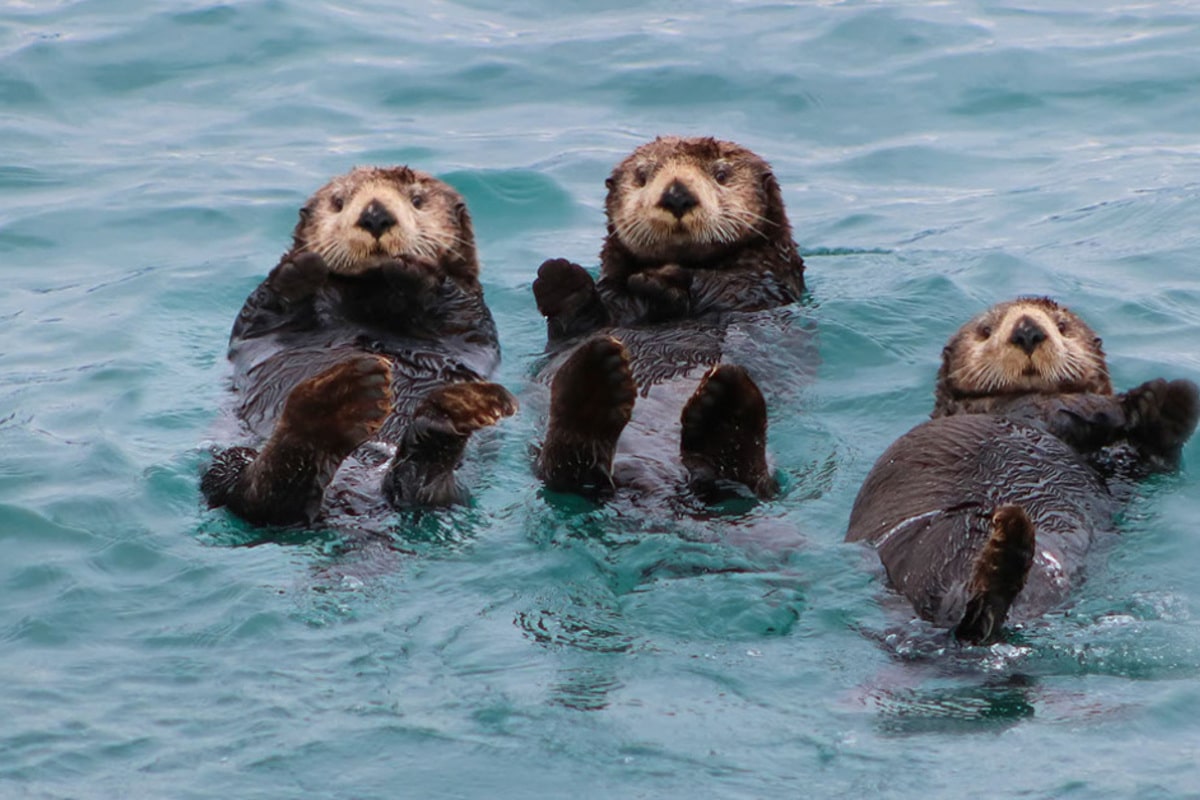Sea otters are among the most fascinating and beloved marine mammals, known for their intelligence, playfulness, and essential role in marine ecosystems. These animals inhabit the cold waters of the Pacific Ocean and exhibit a variety of unique behaviors that continue to amaze scientists and nature enthusiasts alike. Their dense fur, social habits, and ability to use tools make them truly special. Here are some interesting and educational facts about sea otters that you might not have known.
- The fur of sea otters is the densest of all mammals, with up to a million hairs per square centimeter. This dense fur traps air and provides insulation, allowing otters to stay warm in freezing waters. Unlike other marine mammals, sea otters do not have a layer of blubber.
- Sea otters spend several hours a day grooming their fur to maintain its insulating properties. If the fur becomes dirty or matted, it loses its ability to trap air and the animal could get cold. Grooming is therefore a vital survival activity.
- They are one of the few marine animals known to use tools. Sea otters keep rocks in skin folds near their armpits and use them to crack open the hard shells of clams and sea urchins. This demonstrates a high level of intelligence and problem-solving.
- While sleeping, sea otters often hold hands or wrap themselves in kelp to avoid drifting apart. This behavior helps them stay close together in groups, called rafts, and protects them from ocean currents.
- A sea otter can eat up to a quarter of its body weight in food every day. Their diet includes sea urchins, crabs, mollusks, and fish. They are excellent divers and can reach depths of over 100 meters in search of food.
- Sea otters play a critical role in maintaining kelp forest ecosystems. By eating sea urchins, which would otherwise overgraze kelp, otters help preserve these important underwater habitats. Their presence supports biodiversity and ocean health.
- Otters store both food and tools in loose skin folds near their chests, using them like pockets. This allows them to collect food while diving and eat it later on the surface. Such foresight is rare in the animal kingdom.
- Baby sea otters are born with extra fluffy fur that keeps them buoyant. Mothers leave them floating on the surface while they dive for food. This adaptation helps ensure the pup’s safety while the mother hunts.
- Sea otters have excellent vision both underwater and on land. They also possess a highly developed sense of smell, which aids in social interaction and communication within their group.
- Their habitat stretches along the northern Pacific coast, from Alaska to Japan. In the 19th century, sea otters were hunted nearly to extinction for their valuable fur. Today, they are a protected species and their populations are slowly recovering.
- In the wild, sea otters can live up to 20 years. Males are usually larger and more territorial than females. They display complex social behavior and often engage in playful activities.
- One of their most charming habits is eating on their backs with food placed on their bellies like a table. They also enjoy playing with shells, rocks, and other objects found in their environment.
- The sea otter’s short but powerful tail helps it steer while swimming. Its hind feet are webbed and act like flippers, making it a fast and agile swimmer. These physical adaptations contribute to their success as marine predators.
Sea otters are truly remarkable creatures, filled with intriguing behaviors and characteristics. These fascinating facts reveal how vital they are to the health of marine ecosystems and how unique their lifestyle is. Learning about sea otters helps us appreciate the delicate balance of nature and the importance of protecting such species. The more we know about them, the more we understand the wonders of the ocean.





